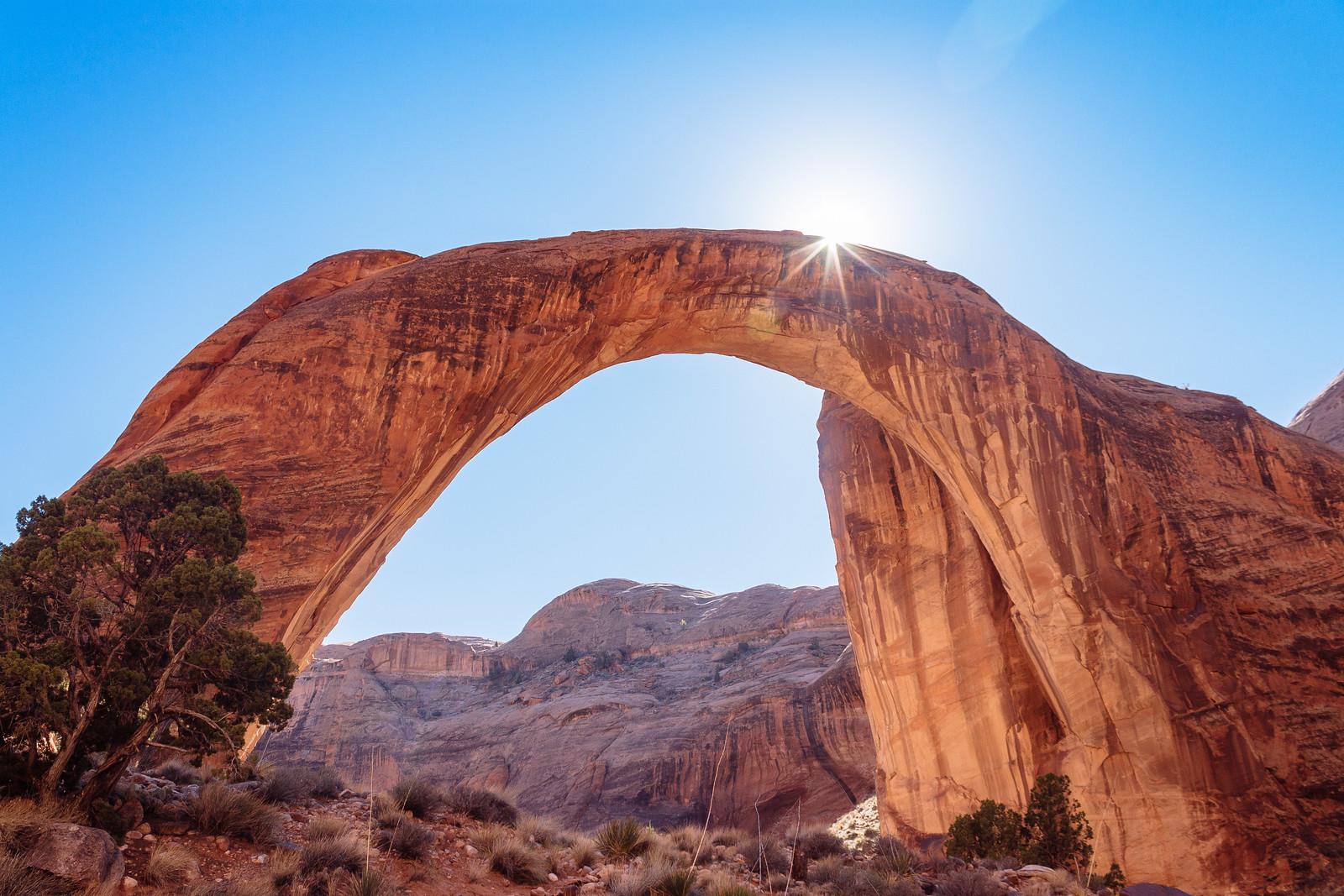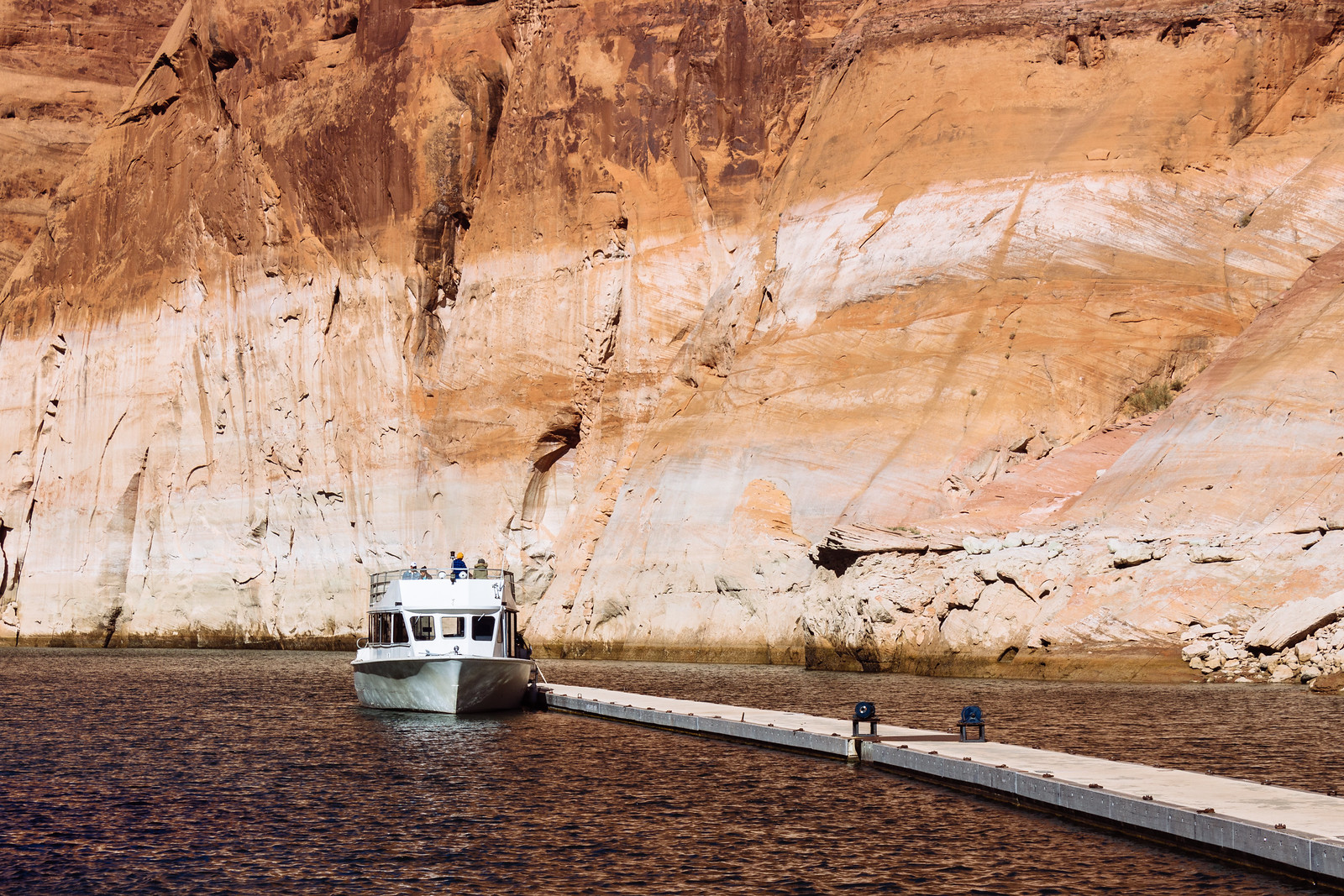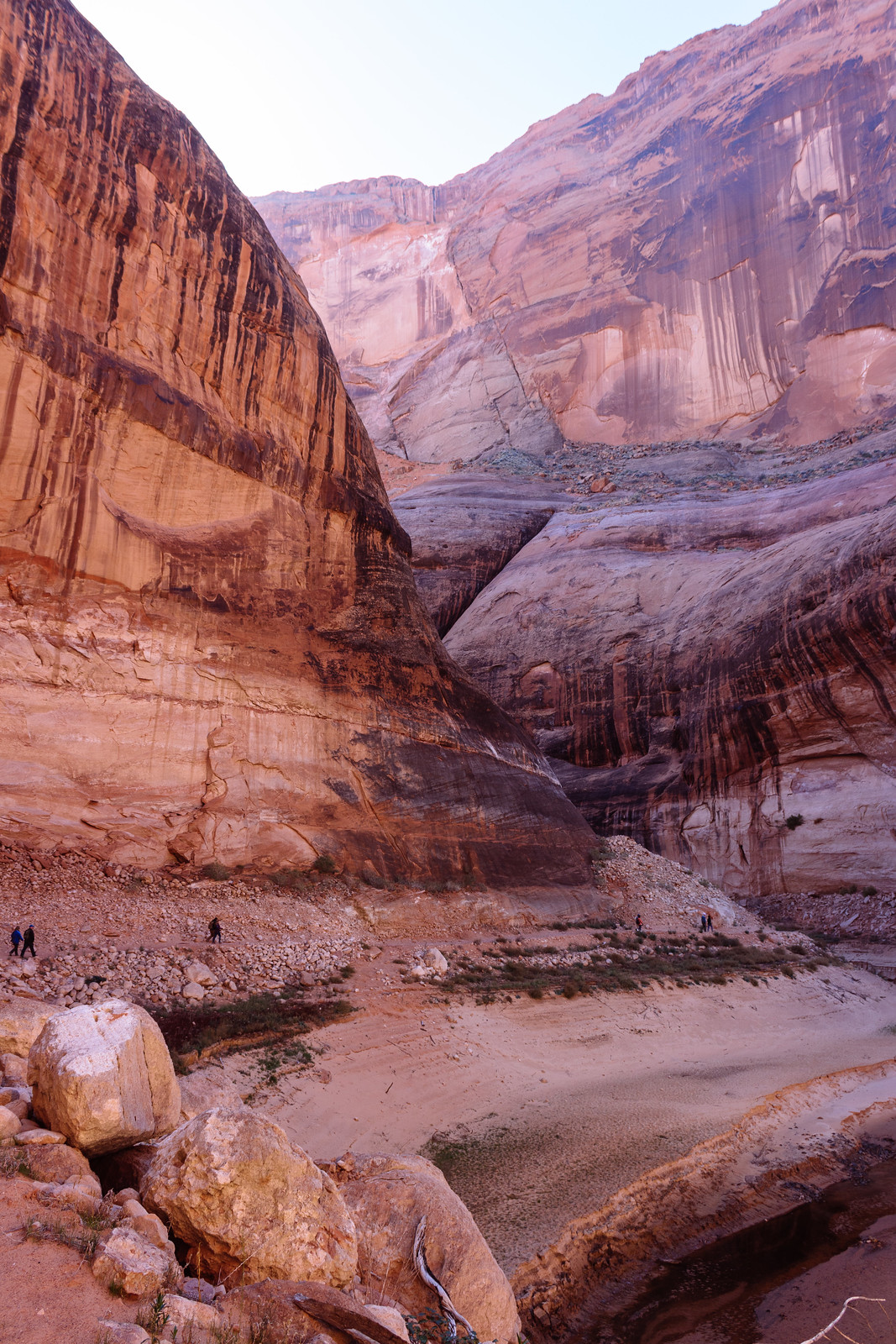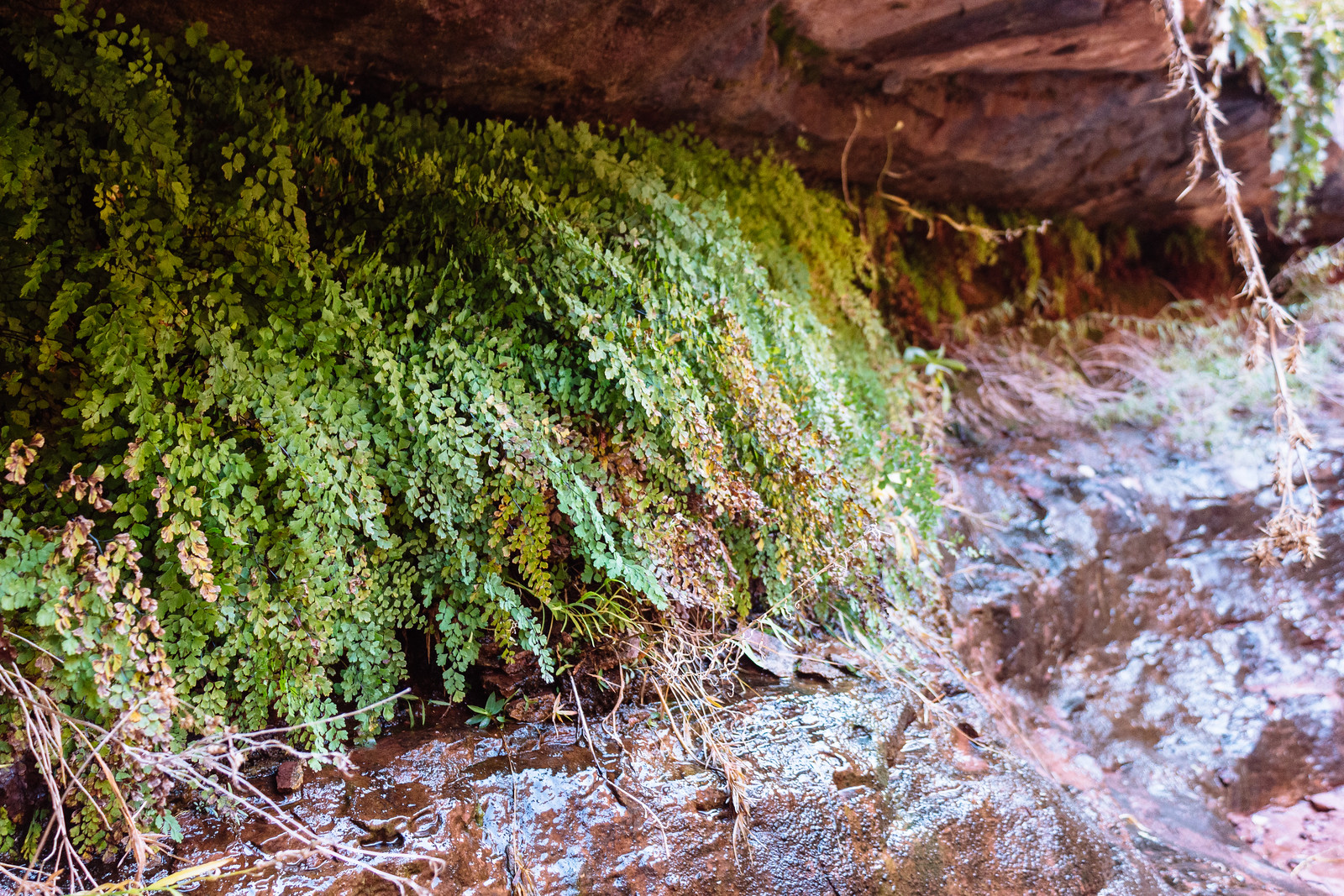Photo Post: Rainbow Bridge, One of the World’s Tallest Natural Arches
 |
| Rainbow Bridge |
Natural arches are one of those things that make sense to you on an intellectual level. Of course they can stand up without any external support; an arch is one of the most stable forms known to physics. But on a human level, they float in the air almost as if they’re alive, as if either end of the arch is a massive, giant leg.
Rainbow Bridge is one such natural arch that makes your whole face light up the first time you see it. In fact, it’s one of the world’s tallest arches (and far more impressive than Arches National Park’s Delicate Arch, made famous by Utah’s state license plate). But tucked away as it is deep in Utah’s backcountry, Rainbow Bridge is one of the most isolated national monuments in the country.
 |
| Rainbow Bridge peeking out with Navajo Mountain in the background |
Before the Colorado River was plugged up by Glen Canyon Dam in the 1960s, Rainbow Bridge required a 6-mile hike uphill from the canyon floor—not to mention running the river south from middle-of-nowhere, Utah.
But after Lake Powell filled up behind the dam, you can now simply ride a boat from the city of Page on the Arizona–Utah border two hours east to the side canyon where Rainbow Bridge hides out.
 |
| The tiny cruise boat |
When I visited last November, the boat captain and tour guide gave us an hour and a half at the monument before we had to turn around and return to Page, Arizona.
These mere 90 minutes provided just enough time to hike out to the arch, have a little snack, take some pictures, and head back, but I turned around wishing I had more time to sit before the arch for hours to watch the sunlight play with it over the day.
 |
| The walls of Bridge Canyon |
This brief, accessible hike through Bridge Canyon represents what the beloved, storied Glen Canyon used to be before it was flooded. Here, desert varnish paints the canyon walls a deep, iridescent brown, while hanging gardens of ferns take root where surface water has trickled down and been forced out after meeting denser rock layers. All this and much, much more was destroyed when Lake Powell was created to store millions of acre-feet of water and to generate clean electricity for the Southwest—but it’s preserved here at the national monument.
 |
| Hanging gardens |
How to get there
For most folks, the point of departure will be Wahweap Marina at the far southern tip of Lake Powell, right next door to Glen Canyon Dam on the Arizona–Utah border. You’ll have to pay $30 for a weeklong entrance to Glen Canyon National Recreation Area to access the lakeshore (or just present your National Parks annual pass).If you own or are renting a (house)boat, simply cruise upstream along the Colorado River past Padre Bay all the way out almost to the point where the San Juan River joins the Colorado. Head south into Forbidding Canyon and dock at the National Park Service’s facilities.
If you’re just along for the ride, you’ll need to reserve a ticket for a boat tour that runs around $130 per person, round trip. Check in at the lobby of the Lake Powell Resort across the road from the ranger station.
And if you’re the adventurous type, you can even undertake a two-day hike (that’s two days, one direction) over Navajo Mountain and reach Rainbow Bridge from the southern side of the arch. A permit from the Navajo Nation is required.